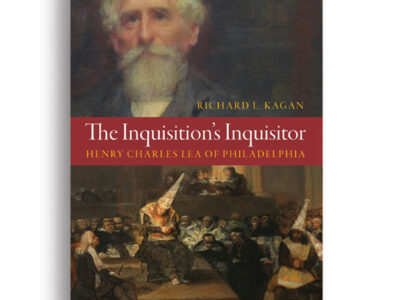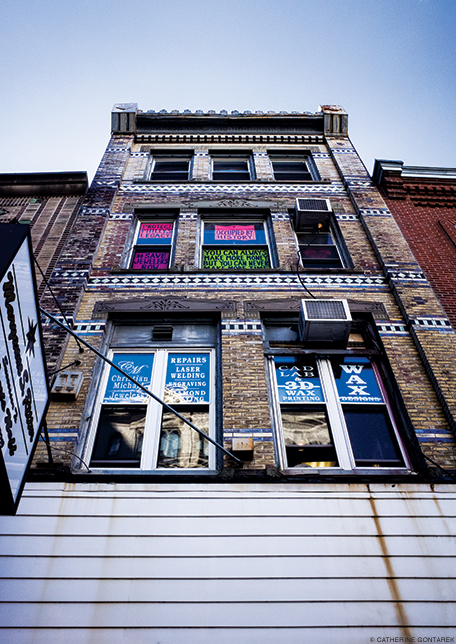The challenge is daunting.Take more than seven miles of Philadelphia’s Delaware River waterfront: from Allegheny Avenue at the north end to Oregon Avenue at the south—a meandering hodge-podge of abandoned industry and Home Depots, gated condominiums and oversized hotels, and the perennially underdeveloped stretch of Penn’s Landing. Set aside the fact that the waterfront has long been severed from the rest of the city by I-95. Toss in 15 different civic organizations, all looking out for their own interests. Dangle a golden carrot of casinos over the pot. Infuse with the inert volatility of Philadelphia politics.
For years, the last line of the recipe has been: Stand back and avert your eyes. Then, this past fall, something unusual happened: Philadelphia Mayor John Street signed an executive order authorizing Penn Praxis, the School of Design’s planning practice clinic, to create a master plan for that seven-mile stretch.
The project will involve three stages, notes Harris Steinberg C’78 GAr’82, Penn Praxis’ director: “There’s the civic-engagement work to create the principles; there’s the civic vision based on the principles; and there’s the implementing strategy meant to support and put in place and honor the work of the citizens in creating the vision.” The process will be “citizen-driven,” he says, drawing on a 45-member advisory group (15 of whose members are representatives of the civic associations) as well as a smaller steering committee. The watchwords, he adds, will be openness, transparency, and excellence.
To fund the first phase of the project, Penn Praxis—which has already made substantial contributions to the Penn’s Landing planning process [“Gazetteer,” May/June 2003], among other projects—recently received a $1.6 million grant from the William Penn Foundation.
Reaction to the announcement has been overwhelmingly positive. A “stunning example of inclusion” was the verdict from the usually cynical Philadelphia Daily News, which has been working with Penn Praxis to encourage more public dialogue about casinos and other civic projects.
Despite some political jockeying by potential mayoral candidates, Steinberg says he and his team have been getting “really strong support from virtually everyone,” adding: “We are so open and transparent and apolitical it’s like everybody’s welcome, so it diffuses some of their weaponry.”
Steinberg recently sat down with Gazette senior editor Samuel Hughes to talk about the project and its implications for the city.
What’s the background for Penn Praxis’ involvement in this project?
The projects that I’ve done in the past four or five years with the editorial boards of the Inquirer and the Daily News have helped us gain a reputability and credibility as an honest broker for convening civic discussions about large-scale planning issues. Casinos are coming; there’s tons of development pressure; and the right councilman [Frank DiCicco] who cared about these things was trying to figure out a way through this. I think Penn’s credibility as an institution and our civic-engagement standing in Philadelphia, which built on the Rodin legacy and President Gutmann’s current objectives, also helped us.
When you were first approached, what was your response?
I said I would [take it on] under the conditions that it was an open and transparent public process, that the press was involved, and that we would put forward recommendations for the implementing body that would be accountable for the public voice.
Were you shocked when they agreed?
I was. They came back and the mayor said, “Let’s figure this one out,” and within a couple of months we were sitting at the table in the mayor’s cabinet room, crafting an executive order to make it happen. It’s just snowballed.
Given the mistakes made by the city over the years, and its various failed plans for the waterfront, has the lack of progress been in some ways beneficial?
Definitely. I think that’s always been Philadelphia’s charm. We move at a different pace than any other major city. In a sense we save ourselves from ourselves. We haven’t made any of those egregious errors yet. I-95 [built back in the 1960s] was the most egregious, and that’s going to be the longest and the costliest to undo—if we ever can.
What’s the biggest challenge?
It goes from strip malls and surface parking lots at the southern end to some sort of post-industrial landscape at the northern end. It’s like you are in different cities. The center has what’s supposed to be sort of our public square on the waterfront, but you can’t get there very easily, and once you do there’s not much to do. There are two casinos coming, possibly. What do they look like? What are the traffic implications going to be? Then there are the incredibly different psyches of the different communities along the edges.
So we are trying to balance the needs and the objectives, the hopes and dreams of the neighbors with the broader hopes and dreams and objectives of the city as a whole.
How do you deal with the needs and objectives of 15 civic associations?
Harris Sokoloff, my partner from the Graduate School of Education, is an expert in civic deliberation, and will help us create a process so that the groups themselves can select representation and begin to understand that this time it’s the whole we’re thinking about, not our own political piece of the turf.
Everyone is so used to fighting for their patch of earth. And we’re trying to say: “Wait a minute. If we all work together, imagine the benefits we can all reap by improved services, improved streetscape, whatever.”
This is a citizen-driven process. It’s not top-down; it’s not coming from the advisory group; it’s got to be a balance of civic values and expert opinion. Through that process there will emerge this vision.
We’re going to work with some of our leading design professionals, both on our faculty as well as in the city, to come up with something that reflects the civic values and also pushes the envelope—and that’s going to be hard in Philadelphia, because we are so used to red brick and white trim. There’s an opportunity here.
At the end of this first process, what will you have?
Ideally we will have what I’m calling a civic vision of the waterfront, which will be compelling graphics, drawings, and models that show the quality and character of the seven-mile stretch along the water’s edge itself; what possible development parcels might look like; the character of Delaware Avenue, hopefully as one of the world’s great boulevards; the connections back to the communities; Penn’s Landing key sites, and their character and form of quality. So there’ll be architecture and landscape architecture, urban design and plans—in model form, in video form, on the Web, with the civic foundational documents that support it.
Those will be the values and principles elicited from the civic-engagement forums that we’ll host through February. Citizens from both the neighborhoods and around the city will help us shape those principles, and those will inform the designers.
There will also be recommendations for an implementing body, so at some point we’ll begin working with a steering committee to look at research commissions and other forms of implementing these plans around the country—and begin to piece together a sketch of what would be an appropriate public entity to receive funding and be charged with implementing the vision that’s come out of the public voice.
What sort of cost are we looking at?
We’re talking billions, ultimately. And we’re talking about longterm. What [School of Design Dean] Gary Hack has said, and he is absolutely correct, is we need to build a congressional-earmark milestone down the road. Right now we don’t have that, so we’re overlooked—it’s a chicken and egg thing. But if we’re given the opportunity to get our act together, have the conversation, put forward the vision, and then figure out what’s important to us, then our politicians can act on our behalf, which is a novel way of thinking.
Should Mayor Street be getting some props for this?
Definitely. We’re giving them to him every second, and the papers have been very complimentary. I have now spent some evenings with him editing the executive order, and all of the things that have been really good about this are the things that he supports—the openness, the transparency, the public meetings, the language that says we are creating a civic vision.
People say, “Why didn’t he do it seven years ago?” And I say: “Who knows? Does it matter?” Today’s today. We are moving forward.
How long is Penn Praxis’ involvement likely to be?
My immediate horizon is roughly a year—that’s to do the civic-engagement work, do the design work, and come to some sort of ratification of a vision. Implementing this could take 30 years. Could be the rest of my career. Whether I’m going to be involved or not—we’ll see.




